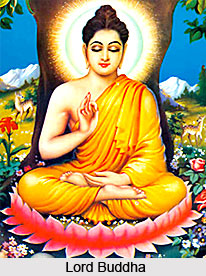 In ancient India, Kausambi was the capital of Chedi-vatsa janapada, one of the prominent janapadas into which the Indo-Aryan people were divided. As some of these janapadas figure prominently in the Brahmanas and Upanishads, it is not unlikely that the antiquity of Kausambi goes back to the period of the Brahamanas. The Shatapatha Brahamana has mentioned a person called Proti Kaushambeya, a native of Kausambi. The antiquity of the city is confirmed by the Mahabharata and the Ramayana, the former ascribing its foundation to Kusamba, the third son of the Chedi King Uparica Vasu and the latter to Kusamba, the son of Kusa. King Ashoka appears to have been an overlord of Vatsa, and had placed its administration in charge of Mahamatras with their headquarters at Kausambi.
In ancient India, Kausambi was the capital of Chedi-vatsa janapada, one of the prominent janapadas into which the Indo-Aryan people were divided. As some of these janapadas figure prominently in the Brahmanas and Upanishads, it is not unlikely that the antiquity of Kausambi goes back to the period of the Brahamanas. The Shatapatha Brahamana has mentioned a person called Proti Kaushambeya, a native of Kausambi. The antiquity of the city is confirmed by the Mahabharata and the Ramayana, the former ascribing its foundation to Kusamba, the third son of the Chedi King Uparica Vasu and the latter to Kusamba, the son of Kusa. King Ashoka appears to have been an overlord of Vatsa, and had placed its administration in charge of Mahamatras with their headquarters at Kausambi.
Several explanations have been given with regard to the name of Kausambi. . Different traditions suggest (1) that the city was named after Prince Kusamba; (2) that it was originally the dwelling place of the sage Kosamba; (3) that the city came to be called Kosambi because when it was founded, numerous Kosamba trees were uprooted on the site, or because the town abounded in the shady Kosamba trees.
It has been said in the Puranas that Nicaksu, the sixth in line from Parikshit had transferred his capital from Hastinapura to Kausambi, as Hastinapura was ravaged by flood, invasion of locusts and upheavals in the Kuru family itself. Evidently, according to the legend, the city of Kausambi was important enough to be selected as the new capital of the scion of the Pandavas. The legend thus corroborates the antiquity of the city as recorded in the Brahmanas, Mahabharata and Ramayana.
During Buddha`s time Kausambi was one of the six most important and prosperous towns of India. It was a nerve centre of ancient Indian communications as the principal routes from north to south and east to west met at the city. It was a terminus of river traffic and an important emporium of Madhyadesa. The city retained its importance at least up to the sixth century A.D. In fact Kausambi of the Vatsas was one of six great cities suitable for Lord Buddha`s parinirbana.
Indian literature consistently refers to Kausambi as a royal city, i.e. the capital of a kingdom; but in the Si-yu-ki of Huen Tsang, Kausambi is represented rather as a country with its capital, which was evidently named Kausambi. Kausambi has been described in the Trikandasesa as Vatsa-pattana or `the capital of Vatsa`.
Kausambi had great military strength. The remains at Kosam include those of a vast fortress with eastern ramparts and bastions, four miles in circuit, with an average height of 30 to 35 feet above the general level of the country. The fact that the city was an important commercial centre is indicated by the extraordinary variety of the coins found there.
Kausambi had been a very favourite place of Lord Buddha. As a result Buddhism as a religion had profound influence in the land of Kausambi. In the accounts given by Huen-Tsang it has been mentioned that there were many Buddhist monasteries in the region.



















